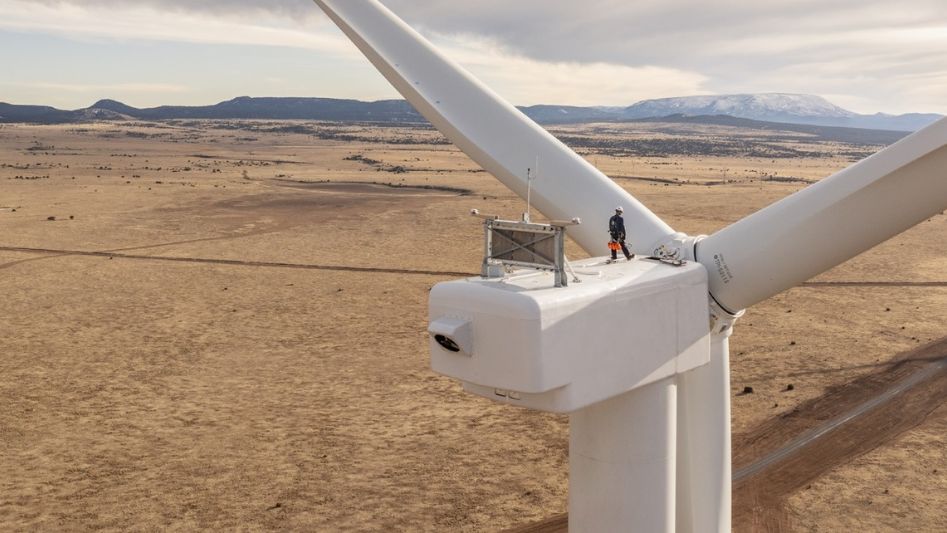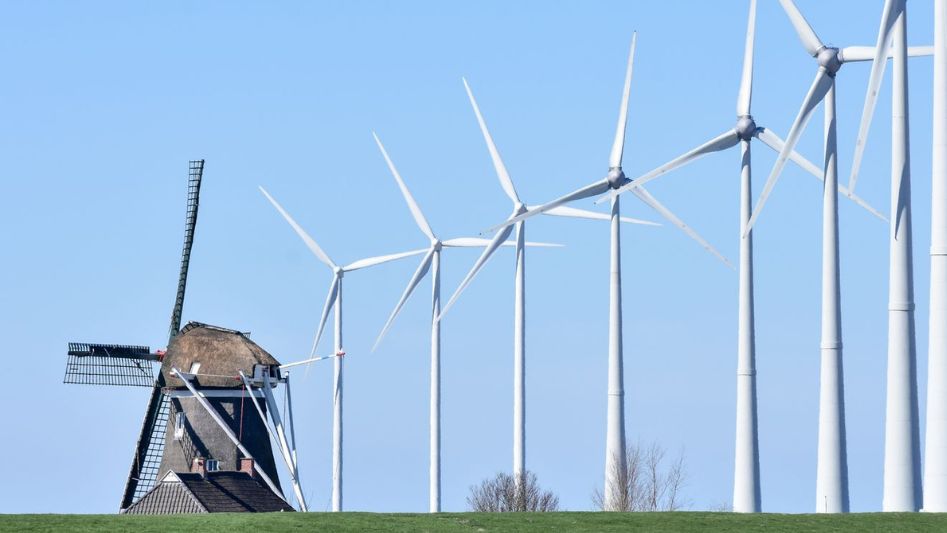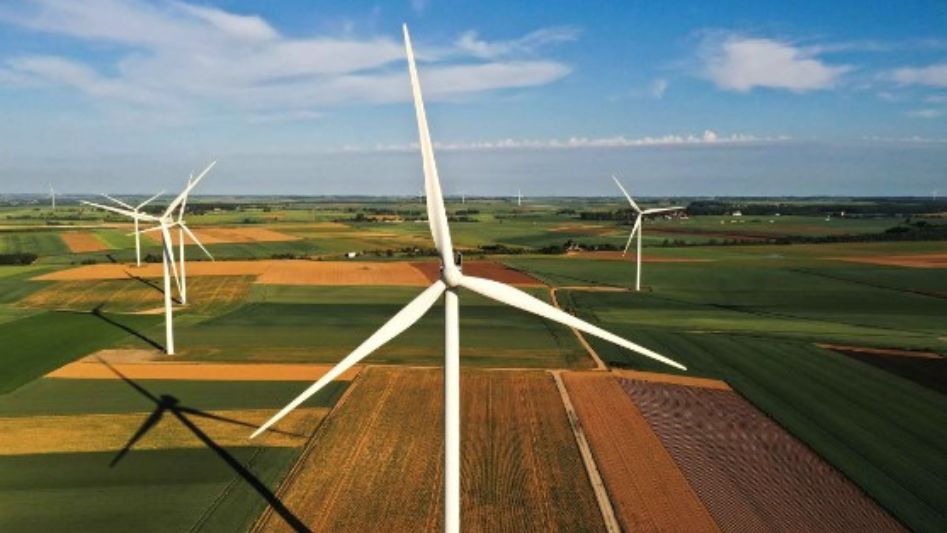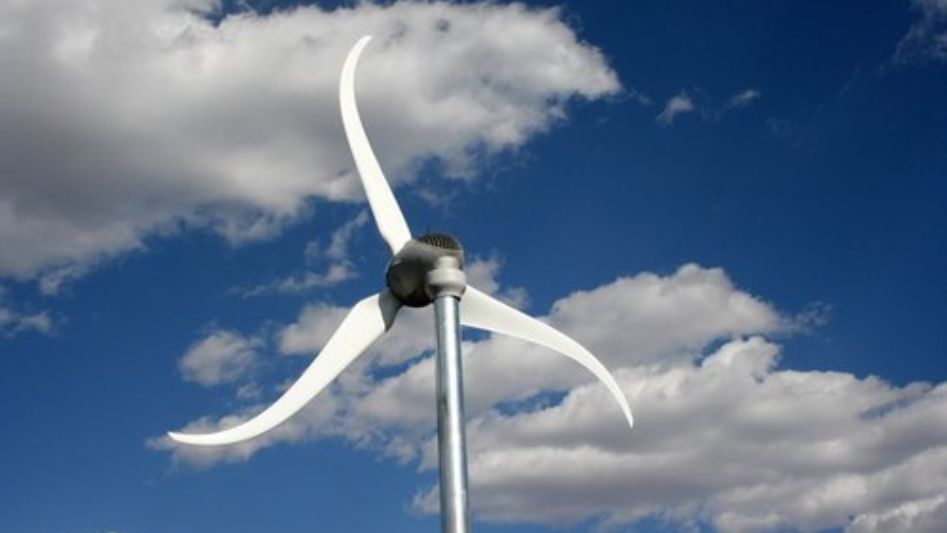Wind energy is a clean and renewable source of energy that has gained significant popularity in recent years. In this beginner’s guide, we will explore how wind energy works and what it can power.
Table Of Content
We invite you to read: “The Environmental Impact of Wind Energy: A Comprehensive Analysis”

How does wind energy work?
Wind turbines are the primary technology used to harness wind energy. They work by converting the kinetic energy of wind into mechanical energy, which is then converted into electricity. A wind turbine consists of a rotor with two or three blades that rotate when the wind blows. The rotor is connected to a generator that converts the rotational energy into electrical energy.
Wind turbines are typically installed in windy locations such as open fields, hills, or offshore locations. The wind speed and direction are measured by an anemometer and a wind vane, respectively, and the turbine is controlled by a computer system that adjusts the blade pitch and speed to optimize power output.
What can wind energy power?
Wind energy has the potential to power a wide range of applications, from small-scale residential use to large-scale commercial and industrial applications. Some of the most common applications of wind energy include:
Residential Energy
Small wind turbines can be installed on residential properties to generate electricity for the home. These systems are typically designed to supplement the energy needs of the home and are not intended to provide all of the home’s energy needs.
Commercial Energy
Large-scale wind turbines can generate significant amounts of electricity for commercial and industrial applications, such as manufacturing plants or data centers.
Community Energy
Wind turbines can also be installed as part of a community wind energy project, which allows multiple households or businesses to share the benefits of the energy generated by the turbine.
Offshore Energy
Offshore wind farms are becoming increasingly popular, as they can generate large amounts of electricity in locations with high wind speeds, where traditional land-based wind farms may not be feasible.
We invite you to read: “How Wind Energy is Changing the Landscape of Energy Generation”

What are the benefits of wind energy?
Wind energy offers a range of benefits, including:
Clean and Renewable
Wind energy is a clean and renewable source of energy that does not produce greenhouse gas emissions or other pollutants that contribute to climate change.
Cost-Effective
Wind energy has become increasingly cost-effective in recent years, with the cost of wind energy now competitive with traditional fossil fuel-based energy sources.
Energy Security
Wind energy can help to increase energy security by reducing dependence on foreign sources of energy and diversifying the energy mix.
Job Creation
The wind energy industry has the potential to create significant job opportunities, including manufacturing, construction, and maintenance of wind turbines.
We invite you to read: “The Economics of Wind Energy: A Cost-Effective Solution for Electricity Generation”

Conclusion
Wind energy is a clean and renewable source of energy that has the potential to power a wide range of applications, from residential to commercial and industrial. As the technology continues to improve and the cost continues to decline, we can expect to see increased adoption of wind energy as part of our transition to a more sustainable and renewable energy future.
FAQ
Is wind energy expensive?
The cost of wind energy has become increasingly competitive with traditional fossil fuel-based energy sources in recent years.
Is wind energy reliable?
Wind energy is a reliable source of energy when wind conditions are favorable, and advancements in technology are improving the efficiency and reliability of wind turbines.
What are the environmental benefits of wind energy?
Wind energy is a clean and renewable source of energy that does not produce greenhouse gas emissions or other pollutants that contribute to climate change. It also helps to reduce the reliance on fossil fuels and their associated negative environmental impacts.
What are some challenges associated with wind energy?
Some challenges associated with wind energy include the intermittency of wind, the impact on bird and bat populations, and the visual impact on the landscape.
You May Also Like
- The Role of Wind Energy in Achieving Sustainable Development Goals
- A Closer Look at the Benefits and Limitations of Wind Energy
- How Wind Energy Can Help Mitigate Climate Change
- Harnessing the Wind: An Introduction to Wind Turbines and Wind Energy
- How Wind Energy Can Contribute to a Zero-Carbon Future

